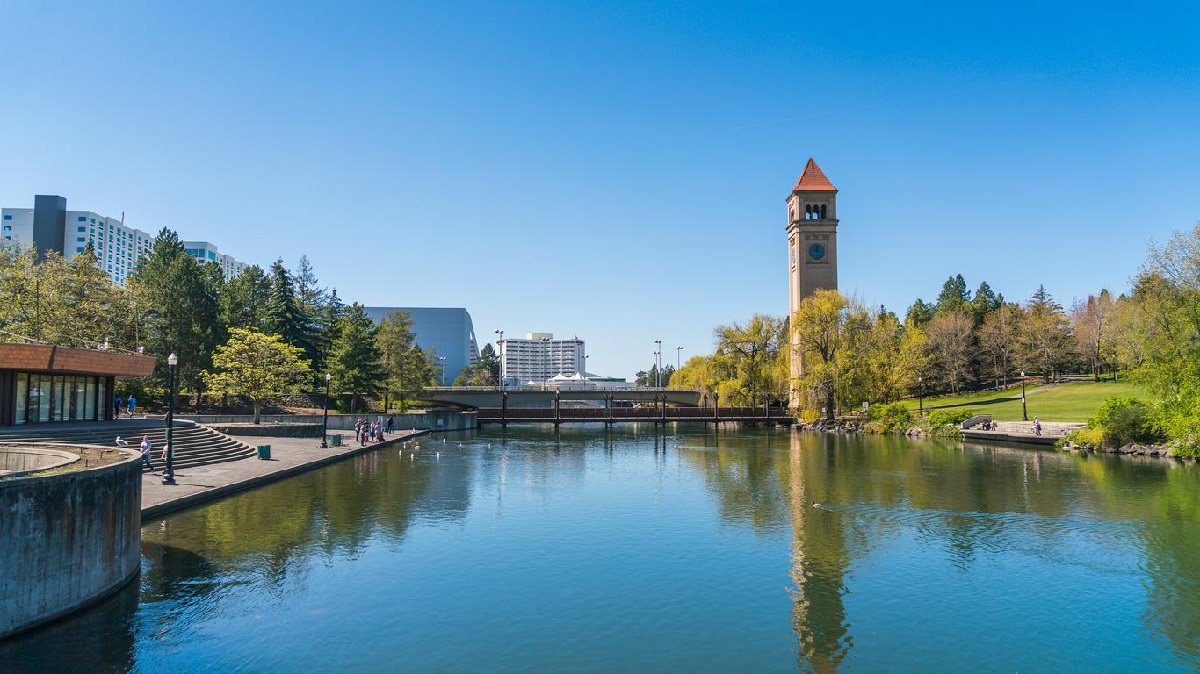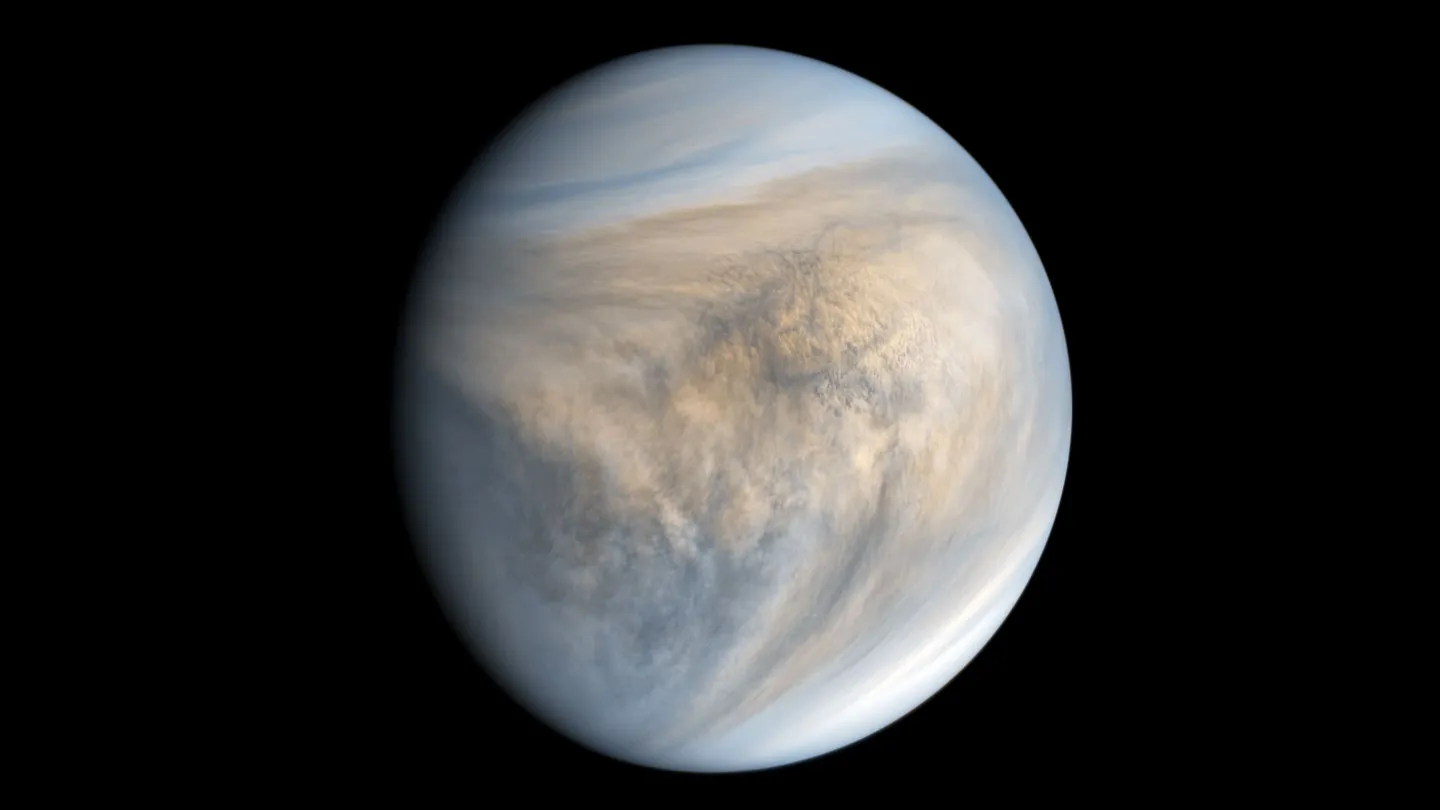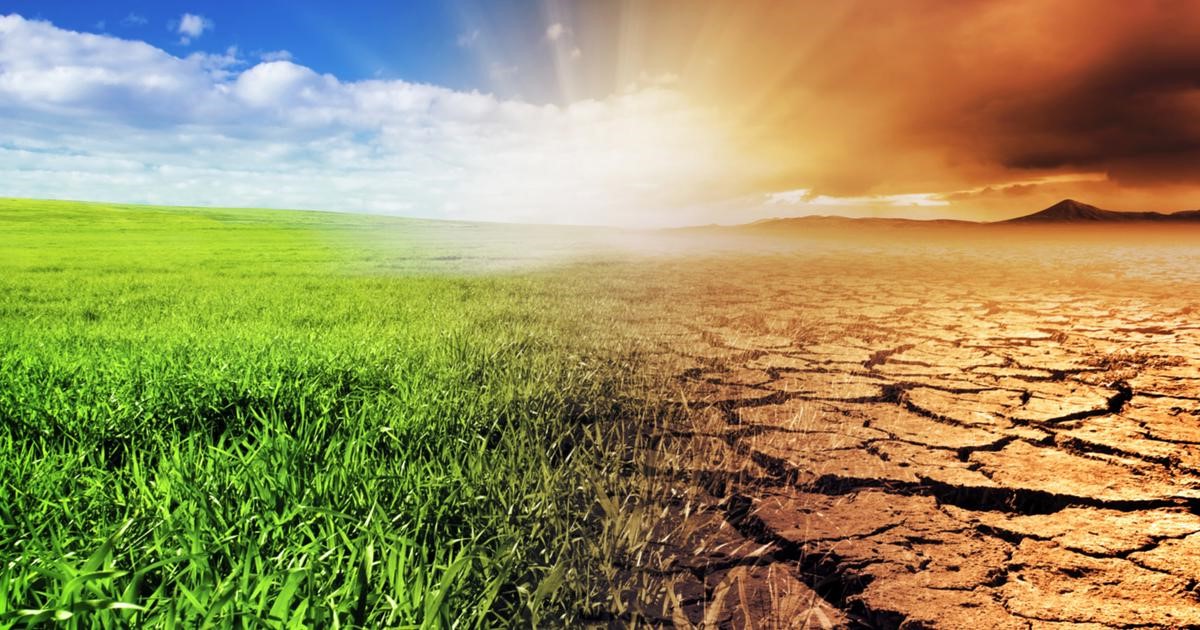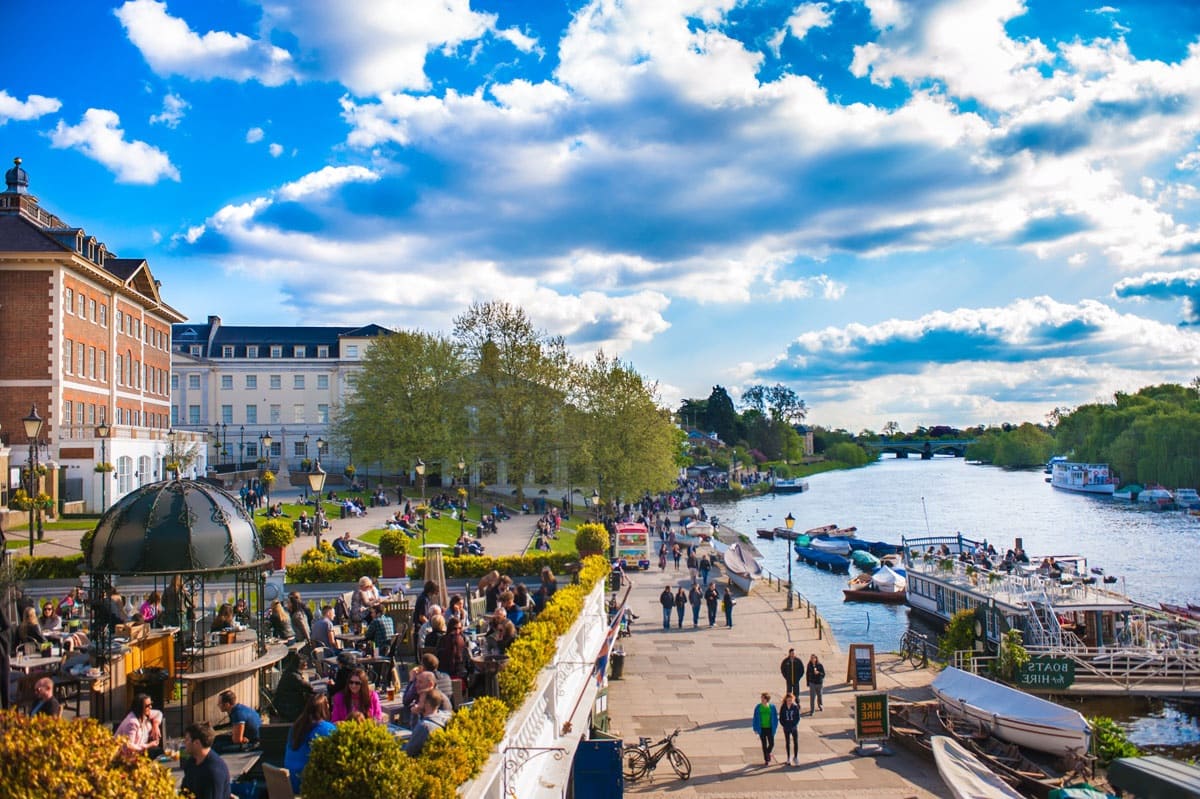Home>Weather and Climate>Understanding Spokane’s Average Temperatures


Weather and Climate
Understanding Spokane’s Average Temperatures
Modified: May 6, 2024
Discover Spokane's average temperatures throughout the year and gain insights into its weather and climate. Plan your visit with confidence.
(Many of the links in this article redirect to a specific reviewed product. Your purchase of these products through affiliate links helps to generate commission for Temperatures.com, at no extra cost. Learn more)
Table of Contents
Introduction
Spokane, Washington, is renowned for its diverse climate, characterized by distinct seasonal variations and unique weather patterns. Understanding the average temperatures in Spokane is crucial for residents, visitors, and businesses alike. From the scorching heat of summer to the frosty chill of winter, Spokane's climate presents a fascinating tapestry of temperature dynamics.
In this article, we delve into the factors influencing Spokane's average temperatures, explore the seasonal variations that shape the city's climate, examine historical temperature trends, and assess the impact of climate change on Spokane's average temperatures. By gaining a comprehensive understanding of these elements, we can appreciate the intricate interplay between nature and human activity, and how it manifests in Spokane's temperature profiles.
Join us on this journey as we unravel the nuances of Spokane's average temperatures, shedding light on the captivating blend of geographical, meteorological, and environmental factors that define the city's climate.
Factors Affecting Spokane's Average Temperatures
Spokane's average temperatures are influenced by a myriad of factors, each playing a pivotal role in shaping the city's climate. From geographical features to atmospheric conditions, these elements converge to create the temperature tapestry that defines Spokane's weather patterns. Let's delve into the key factors that contribute to the city's average temperatures:
1. Geographic Location
Situated in eastern Washington, Spokane's geographic location significantly impacts its average temperatures. The city's proximity to the Rocky Mountains and the Cascade Range influences its climate, leading to distinct temperature variations throughout the year. Additionally, the region's elevation plays a crucial role, with higher elevations experiencing cooler temperatures compared to lower-lying areas.
2. Continental Climate
Spokane experiences a continental climate, characterized by hot, arid summers and cold, snowy winters. This climate type is influenced by the city's distance from large bodies of water, leading to pronounced temperature fluctuations. The absence of moderating maritime influences results in more extreme temperature shifts, contributing to the city's unique climate profile.
3. Air Masses and Fronts
The movement of air masses and the interaction of weather fronts significantly impact Spokane's average temperatures. The convergence of warm and cold air masses can lead to rapid temperature changes, often resulting in dramatic shifts in weather patterns. These atmospheric dynamics contribute to the variability of Spokane's temperatures, shaping the city's climate throughout the year.
4. Urban Heat Island Effect
As a growing urban center, Spokane experiences the urban heat island effect, where human activities and infrastructure contribute to localized temperature increases. The proliferation of buildings, roads, and other urban structures can lead to higher temperatures within the city compared to surrounding rural areas. This phenomenon influences Spokane's average temperatures, particularly in densely developed areas.
5. Vegetation and Land Use
The presence of vegetation and land use practices also influences Spokane's average temperatures. Urban areas with limited green spaces and extensive pavement can experience higher temperatures due to reduced evapotranspiration and increased heat retention. Conversely, rural areas with more vegetation may exhibit slightly lower average temperatures, highlighting the impact of land use on the city's climate.
By understanding these factors, we gain valuable insights into the intricate interplay of natural and human-induced elements that shape Spokane's average temperatures. These influences underscore the dynamic nature of the city's climate, reflecting the complex interactions between geographical, meteorological, and anthropogenic factors that define Spokane's temperature patterns.
Seasonal Variations in Spokane's Average Temperatures
The seasonal variations in Spokane's average temperatures paint a vivid portrait of the city's climatic diversity. From the sweltering heat of summer to the crisp chill of winter, each season brings its own distinct temperature profile, shaping the experiences of residents and visitors alike.
Summer
During the summer months, Spokane experiences a surge in temperatures, with July typically being the warmest month. The city basks in the glow of abundant sunshine, coupled with clear skies that amplify the heat. Daytime temperatures often soar into the 80s and 90s Fahrenheit, creating a balmy atmosphere that beckons outdoor enthusiasts to explore the region's natural beauty. The arid climate accentuates the warmth, contributing to the sensation of intense heat during the peak of summer. Warm evenings provide a pleasant reprieve, allowing residents and tourists to savor the lingering warmth as the sun sets over the picturesque landscape.
Autumn
As summer transitions into autumn, Spokane undergoes a gradual cooling process, marking the onset of milder temperatures. The crispness of fall permeates the air, signaling the arrival of sweater weather and the breathtaking transformation of foliage. September and October bring a delightful blend of comfortable daytime temperatures, often ranging from the 60s to the 70s Fahrenheit, while cooler evenings hint at the impending arrival of winter. The seasonal shift paints the city in vibrant hues, as the changing leaves adorn the landscape with a kaleidoscope of colors, inviting locals and visitors to embrace the enchanting autumnal ambiance.
Winter
Winter casts a frosty spell over Spokane, ushering in a season characterized by cold temperatures and snowfall. December through February sees the city enveloped in wintry splendor, with daytime highs typically hovering in the 30s and 40s Fahrenheit. However, the arrival of Arctic air masses can lead to periods of sub-freezing temperatures, accompanied by snowstorms that blanket the region in a glistening coat of snow. The winter wonderland ambiance captivates the city, offering opportunities for outdoor recreation amidst the snowy landscapes, while the occasional clear, sunny days provide a dazzling contrast to the wintry scene.
Spring
As winter yields to spring, Spokane experiences a rejuvenation of temperatures, marking the gradual transition to milder weather. March and April bring a sense of renewal, with daytime temperatures ascending into the 50s and 60s Fahrenheit, heralding the arrival of blooming flora and the resurgence of outdoor activities. The city awakens from its wintry slumber, embracing the warmth and vitality of spring, as residents and visitors revel in the pleasant temperatures and the burgeoning signs of new life that adorn the surroundings.
The seasonal variations in Spokane's average temperatures encapsulate the city's climatic tapestry, offering a captivating journey through the ebb and flow of nature's rhythms. Each season contributes its own unique imprint on the city's temperature profile, weaving a narrative of diversity and enchantment that defines Spokane's ever-changing climate.
Historical Trends in Spokane's Average Temperatures
Over the decades, Spokane has witnessed notable shifts in its average temperatures, reflecting the dynamic interplay of natural climatic variations and potential influences from human activities. Historical data reveals intriguing trends that provide valuable insights into the city's temperature dynamics.
From the mid-20th century to the present day, Spokane's average temperatures have exhibited discernible patterns, capturing the nuances of the city's evolving climate. Analysis of long-term temperature records indicates fluctuations that underscore the city's climatic resilience and susceptibility to external influences.
During the latter half of the 20th century, Spokane experienced fluctuations in average temperatures, with periods of relative stability interspersed with notable deviations. The city's temperature records reflect the impact of regional and global climatic phenomena, including El Niño and La Niña events, which can influence temperature patterns through their effects on atmospheric circulation and sea surface temperatures.
In recent decades, a discernible warming trend has emerged, aligning with broader global climate trends. The gradual increase in Spokane's average temperatures underscores the city's susceptibility to the effects of climate change. While natural climate variability plays a role in temperature fluctuations, the influence of anthropogenic factors cannot be overlooked. Urbanization, land use changes, and greenhouse gas emissions contribute to the warming trend observed in Spokane's historical temperature data.
The winter months have exhibited particularly noteworthy changes, with milder winter temperatures becoming more prevalent over the years. This shift aligns with broader climate change projections, highlighting the impact of global warming on regional temperature profiles. Conversely, the summer months have also shown signs of amplified heat, with periods of prolonged warmth becoming more pronounced in the historical records.
These historical trends in Spokane's average temperatures underscore the city's position within the broader context of climate change. The interplay of natural climatic variability and human-induced influences shapes the city's temperature dynamics, reflecting the intricate relationship between local, regional, and global climate drivers.
As Spokane continues to navigate the complexities of a changing climate, historical temperature trends serve as a valuable resource for understanding the city's climatic evolution. By examining these historical patterns, stakeholders can gain insights into the potential trajectory of Spokane's temperatures, informing adaptive strategies and resilience-building efforts in the face of ongoing climate challenges.
Impact of Climate Change on Spokane's Average Temperatures
Climate change has exerted a discernible influence on Spokane's average temperatures, ushering in a series of transformative shifts that have reshaped the city's climatic landscape. The ramifications of global environmental changes have reverberated through Spokane's temperature profiles, manifesting in various ways that underscore the city's vulnerability to evolving climatic conditions.
One of the most striking impacts of climate change on Spokane's average temperatures is the amplification of temperature extremes. The city has witnessed an increase in the frequency and intensity of heatwaves, with soaring temperatures posing challenges to public health, energy demand, and ecosystem resilience. Conversely, the winter months have experienced fluctuations, with milder winter temperatures becoming more prevalent over the years. These alterations in temperature extremes reflect the overarching influence of climate change on Spokane's climatic patterns, signaling the need for adaptive measures to mitigate potential risks associated with temperature variability.
Furthermore, the changing temperature dynamics have implications for various sectors, including agriculture, water resource management, and urban planning. Shifts in average temperatures can impact crop yields, alter water availability, and necessitate adjustments in infrastructure design to accommodate evolving temperature patterns. The interplay of these factors underscores the multifaceted repercussions of climate change on Spokane's average temperatures, highlighting the interconnectedness of environmental, societal, and economic systems within the context of a changing climate.
As Spokane grapples with the ramifications of climate change on its average temperatures, proactive measures aimed at climate resilience and adaptation are paramount. By integrating climate projections into long-term planning efforts, stakeholders can enhance the city's capacity to withstand temperature-related challenges and capitalize on emerging opportunities. Strategies such as heat mitigation initiatives, sustainable water management practices, and climate-informed urban design can contribute to bolstering Spokane's resilience in the face of evolving temperature dynamics.
The impact of climate change on Spokane's average temperatures underscores the imperative of proactive climate action, emphasizing the need for collaborative efforts to address the multifaceted challenges posed by shifting temperature patterns. By acknowledging the influence of climate change on the city's climatic landscape, Spokane can chart a course toward sustainable adaptation, fostering a resilient and dynamic environment that can thrive amidst evolving temperature dynamics.
Conclusion
In conclusion, the average temperatures in Spokane, Washington, encapsulate a rich tapestry of climatic intricacies, shaped by a convergence of geographical, meteorological, and environmental factors. The city's unique position within the continental climate zone, coupled with its proximity to mountain ranges and the interplay of air masses, contributes to the diverse temperature profiles that define Spokane's weather patterns.
The seasonal variations in average temperatures paint a captivating portrait of nature's ever-changing rhythms, from the scorching heat of summer to the frosty chill of winter, each season leaves its indelible mark on the city's climate. Understanding these seasonal nuances is essential for residents, visitors, and businesses, enabling them to adapt and thrive amidst the dynamic temperature dynamics that characterize Spokane's environment.
Historical temperature trends offer valuable insights into the city's climatic evolution, revealing the interplay of natural variability and potential influences from human activities. The discernible warming trend and the amplification of temperature extremes underscore the impact of climate change on Spokane's average temperatures, emphasizing the need for proactive adaptation strategies to navigate the challenges posed by evolving temperature patterns.
As Spokane continues to navigate the complexities of a changing climate, the integration of climate-informed approaches into urban planning, resource management, and public health initiatives can enhance the city's resilience and sustainability. By acknowledging the influence of climate change on Spokane's average temperatures, the city can chart a course toward a dynamic and adaptive environment, fostering a resilient community that thrives amidst evolving temperature dynamics.
In essence, the average temperatures in Spokane serve as a testament to the intricate interplay of natural and anthropogenic forces, reflecting the city's resilience in the face of climatic challenges. By embracing a holistic understanding of Spokane's temperature dynamics, stakeholders can forge a path toward a climate-resilient future, where the city's average temperatures remain a symbol of adaptability, sustainability, and enduring natural beauty.












